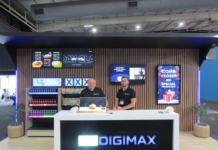Content Marketing Specialist of BroadSign, Stephanie Gutnik, attended the Healthcare Information and Management Systems Society exhibition last month in Orlando. The topic of digital signage was largely neglected, even in presentations about personalised and participatory health experiences across digital channels (HIMSS). Gutnik outlines the benefits that digital signage health care networks bring to physicians, patients and advertisers.
When asked about the medium, several Health Information Technology veterans confirmed that digital signage is a great solution for way-finding. This reality might come as a shock to those cosily within the digital signage sphere, who take for granted the general public’s awareness and appreciation of digital place-based point-of-care networks such as AccentHealth and Health Media Network. Players in this niche are well aware of the benefits that digital signage health care networks bring to physicians, patients and advertisers.
Doctors may deliver customised messaging to receptive patients waiting for their appointment; patients are entertained and educated by informative and engaging content relating directly to their visit/health; and advertisers are able to reach customers in the trusted confines of their doctors’ offices (network-permitting).
That being said, the limited awareness of digital signage benefits among the 1200 exhibitors and 37000 healthcare professionals at HIMSS is excusable due to some of the major changes their industry is dealing with. September 2013’s Omnibus Rule updates several acts including the HITECH Act and HIPAA by introducing more demanding compliance requirements for breach notification rules, patient rights and business associates.
The sector is also attempting to create interoperability standards for information exchange across multiple channels and players, and is approaching privacy and security through PPT, short for ‘people, processes and technology’. Another hot topic relates to realising the HITECH Act’s meaningful use initiative, one that makes health care providers active and responsible parties in educating and encouraging the public to become more involved in electronic access and communication.
On second thought, with these major drivers in mind there is no excuse as to why digital signage is not top of mind with regards to HIT infrastructure and digital communications strategies. A presentation about the WEDI Report supported this statement when comparing its initial goals in 1993 to those of the 2013 update. With patients now at the centre of the health care ecosystem, objectives of the new report include better care and quality at a lower cost, decreasing waste while increasing efficiency and improving on patient safety and empowerment.
One of its recommendations to meet these aims is patient engagement, meant to deliver the right message to the right person in the right place at the right time. When physicians are faced with the task of turning patient activation into engagement, digital communication meets patients where they are and can be adapted to their lifestyles. Patients want to be connected with their physicians.
The convenience and ease of use of mHealth solutions is a stepping stone, but will not be fully effective until integrated with digital place-based networks in medical facilities and vice versa.
The patient-centric healthcare system is just like the viewer-centric realm of digital signage; or really, one and the same. Keeping the doctor away is no longer a patient nor physician’s goal. Efficient and effective communication is easier than ever, and the biggest winner here is your health.















